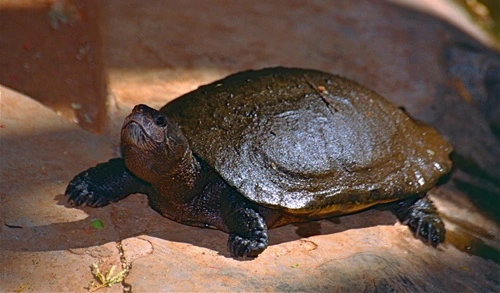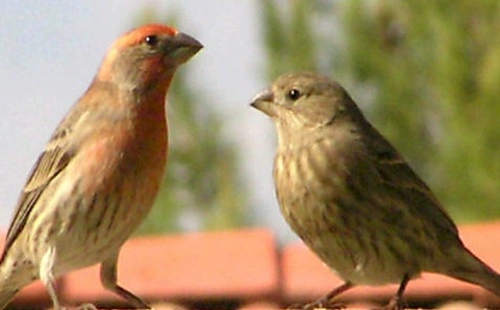The island of Madagascar, known for its unique biodiversity, is home to some of the rarest species in the world. Among its incredible wildlife are a variety of turtles, each with its own special traits and conservation challenges. From fascinating survival strategies to their vital role in the ecosystem, here are some fun and intriguing facts about the Madagascar turtles that make them unique and important to both Madagascar’s environment and global biodiversity.

1. Home to Critically Endangered Species
Madagascar is home to some of the most critically endangered turtles in the world. One of the most notable species is the ploughshare tortoise, also known as the Angonoka tortoise (Astrochelys yniphora), which is found only in Madagascar. This turtle is so rare that it is considered one of the most endangered species on Earth, with only a few hundred individuals remaining in the wild. The biggest threats to these turtles are habitat loss and illegal poaching.
2. Unique Physical Characteristics
Madagascar turtles have unique physical characteristics that help them adapt to their environment. For example, the ploughshare tortoise has a distinctive, upward-curving shell that looks like a plough, giving it its name. This adaptation may help the tortoise navigate its rocky, forested habitat. Another species, the Madagascar big-headed turtle (Erymnochelys madagascariensis), has a notably large head and is adapted for aquatic life, with webbed feet that make it an excellent swimmer.
3. Found Only on Madagascar and Nearby Islands
The unique geography of Madagascar has led to the evolution of species that are found nowhere else on Earth, including its turtles. The isolation of the island has allowed these turtles to develop unique traits and characteristics. For example, the Madagascan spider tortoise (Pyxis arachnoides), named for its intricate, web-like shell pattern, is found only in the sandy coastal forests of southwestern Madagascar, which provides a unique environment for the species to thrive.
4. Masters of Hibernation
Several Madagascar turtle species have adapted to their environment by mastering a form of hibernation known as estivation. During the dry season, when food and water are scarce, some species, like the spider tortoise, will burrow into the sand and enter a state of dormancy to conserve energy. This adaptation allows them to survive long periods without water, which is essential in Madagascar’s dry and arid regions.
5. Vital Role in the Ecosystem
Madagascar’s turtles and tortoises play a vital role in their ecosystem. As they forage and move about their habitats, they disperse seeds, which helps to maintain the biodiversity of the plant species around them. Turtles also help control insect populations by feeding on them, and their burrowing behavior aids in soil aeration. In this way, Madagascar’s turtles contribute to the health of their environment and promote the balance of local ecosystems.
6. High Demand in the Illegal Pet Trade
Unfortunately, Madagascar’s rare turtles are highly prized in the illegal pet trade due to their unique appearance. Species like the ploughshare tortoise and spider tortoise are sought after for their unusual shells and are often sold for thousands of dollars on the black market. This demand has significantly impacted their populations, pushing some species to the brink of extinction. Conservationists and law enforcement agencies are working to combat illegal trade and protect these species.
7. Slow Growth and Late Maturity
Madagascar turtles have slow growth rates and reach maturity later in life, making it difficult for their populations to recover from threats such as poaching and habitat loss. For instance, the Madagascar big-headed turtle doesn’t reach reproductive age until it’s at least 15 to 20 years old. This slow life cycle means that even a small reduction in their population can have significant long-term effects, as it takes time for numbers to rebound.
8. Remarkable Shell Patterns for Camouflage
Many Madagascar turtle species have evolved remarkable shell patterns that help them blend into their surroundings. The spider tortoise, for example, has a shell that resembles a spider’s web, which camouflages it against the sandy, scrubby landscapes of southwestern Madagascar. This camouflage helps protect these turtles from predators and is an excellent adaptation to their specific environment.
9. Gender Determined by Temperature
Like many other reptiles, the gender of some Madagascar turtles is determined by the temperature of the nest during incubation. Warmer temperatures tend to produce female hatchlings, while cooler temperatures result in males. This phenomenon, known as temperature-dependent sex determination, means that changes in climate and habitat can have direct effects on the population dynamics of these turtles.
10. Critically Threatened by Habitat Loss
Madagascar has one of the highest rates of deforestation in the world, which is a major threat to its turtles. As forests are cleared for agriculture and development, Madagascar’s turtles lose their habitat, which is crucial for their survival. The spider tortoise, for example, depends on specific types of coastal forests that are rapidly disappearing, leaving the species increasingly vulnerable. Conservation groups are working to protect these habitats, but the challenge remains immense.
11. Specially Adapted for Both Aquatic and Terrestrial Life
The Madagascar big-headed turtle, one of the country’s most unique species, is specially adapted for both aquatic and terrestrial environments. This turtle prefers slow-moving rivers, lakes, and swamps, where it can use its powerful limbs and large head to feed on various aquatic plants and small animals. Despite its reliance on water, it also spends time on land, giving it the versatility to survive in fluctuating environments.
12. Tortoises Play a Cultural Role in Madagascar
In Madagascar, certain turtle and tortoise species hold cultural significance. Local folklore often features tortoises as symbols of wisdom and longevity. The Malagasy people also have taboos and traditions related to tortoises, which can sometimes aid in their protection. For example, some local communities believe that harming a tortoise brings bad luck, which helps shield these animals from certain threats. Conservation efforts often incorporate these cultural beliefs to foster community-led protection.
13. Collaborative Conservation Efforts
Given the critical status of Madagascar’s turtle populations, there are several international conservation efforts aimed at protecting these unique species. Organizations like the Turtle Survival Alliance and the Durrell Wildlife Conservation Trust work with local Malagasy communities and governments to protect habitats, run breeding programs, and combat illegal wildlife trafficking. Captive breeding and reintroduction programs for species like the ploughshare tortoise are crucial to rebuilding populations in the wild.
14. One of the Rarest Species in the World
The ploughshare tortoise, native to the Baly Bay region in northwestern Madagascar, is one of the rarest turtles on Earth. Conservationists estimate there are fewer than 400 individuals left in the wild, making them critically endangered. Their distinctive, beautiful shells make them a target for collectors, and despite conservation efforts, the population remains at high risk. Some conservationists even etch identifying marks on their shells to make them less attractive to poachers.
15. An Indicator of Environmental Health
Turtles and tortoises are often considered “indicator species,” meaning that their health and population status reflect the overall condition of their environment. In Madagascar, turtles serve as a barometer for environmental health. A decline in turtle populations often signals broader ecological issues, such as habitat destruction, pollution, and climate change. Protecting Madagascar’s turtles is not only essential for their survival but also for the health of the island’s unique ecosystems.
From their slow growth and unique shell patterns to their critical role in the ecosystem, Madagascar’s turtles are truly remarkable creatures. However, they face a multitude of challenges, from illegal trade to habitat destruction, that threaten their survival. With concerted conservation efforts, community involvement, and international support, these unique turtles can hopefully continue to thrive in the wild. Learning more about these extraordinary animals highlights the importance of preserving Madagascar’s diverse and delicate ecosystems for generations to come.



